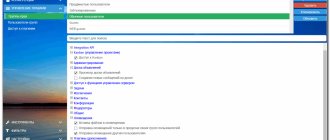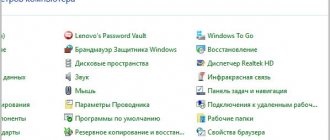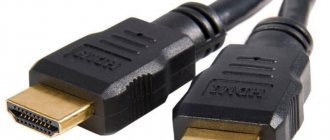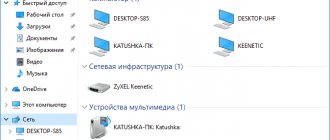Top 10 best network monitoring programs in 2020
Network monitoring programs
- These are the indispensable assistants of every system administrator. They allow you to quickly respond to anomalous activity within the local network, be aware of all network processes and, thus, automate part of the administrator’s routine activities: primarily those related to ensuring network security. Let's see which local network monitoring programs are the most relevant in 2020.
Total Network Monitor 2
This top opens with Total Network Monitor 2 - an extremely affordable and effective software solution for network monitoring of the activities of server machines, which displays the ideal balance between convenience (most free solutions do not have a GUI) and extensive functionality. One of the main programmable components of TNM 2 are monitors, which perform checks at the frequency you require. The list of available checks is impressive. They allow you to track almost any parameter, from the availability of servers on the network to checking the status of services.
It is noteworthy that these objects are capable of independently eliminating the primary consequences of problems (that is, all this happens without the direct participation of the system administrator) - for example, rebooting individual services or user devices, activating an antivirus, supplementing the event log with new entries, etc. - in general, everything that the system administrator initially performed manually.
As for reporting, it stores all the information associated with each test that was carried out by the selected monitor. The cost for 1 copy of this application is only 5,000 rubles
.
Pros: Low price Easy to install User-friendly interface
Cons: No dashboards No multi-threading Doesn't update
Observium
The Observium application, which is based on the SNMP protocol, allows you not only to examine the status of a network of any scale in real time, but also to analyze its performance level. This solution integrates with equipment from Cisco, Windows, Linux, HP, Juniper, Dell, FreeBSD, Brocade, Netscaler, NetApp and other vendors. Featuring a well-designed graphical interface, the software gives system administrators a ton of customization options, from ranges for auto-discovery to SNMP data needed to gather network information.
They also get access to data on the technical characteristics of all equipment that is currently connected to the network. Observium can present all reports that are generated by analyzing the event log in the form of charts and graphs, clearly demonstrating the “weaknesses” of the network. You can use either a demo version (which in our experience is underpowered) or a paid license which costs £200
.
Pros: Free version available Threshold signals Automatic detection features Available for many systems
Cons: No mobile support Not easy to install Not for small networks Disadvantages of the free version
Nagios
Nagios is an advanced monitoring solution that is managed via a web interface. It is by no means easy to learn, but thanks to its fairly large online community and well-researched documentation, it can be mastered in a few weeks.
Using Nagios, system administrators have the opportunity to remotely regulate the load on user or higher-level equipment in the network hierarchy (switches, routers, servers), monitor the level of load on memory reserves in databases, and monitor the physical indicators of parts of network equipment (for example, the temperature of the motherboard , combustion of which is one of the most common breakdowns in this area), etc.
When it comes to detecting network anomalies, Nagios automatically sends alarm notifications to an address preset by the system administrator - be it an email address or a mobile operator phone number. A free demo version will be available to you for 60 days.
Pros: Highly flexible Useful templates Integration with other applications
Cons: Labor-intensive setup Not for large organizations
PRTG Network Monitor
PRTG software component, compatible with devices based on Windows OS, is designed for network monitoring. It is not free (only a 30-day trial period is free), it is used not only for scanning devices that are currently connected to the local network, but can also serve as an excellent assistant in detecting network attacks.
Among the most useful PRTG network services: packet inspection, analysis and saving of statistical data to the database, viewing a network map in real time (the ability to obtain historical information about network behavior is also available), collecting technical parameters about devices connected to the network, as well as analysis load level on network equipment. Note that it is very easy to use - first of all, thanks to an intuitive graphical interface that can be opened using any browser. If necessary, the system administrator can also gain remote access to the application via a web server.
Pros: Lots of features Customizable panels Flexible monitoring Network map
Cons: High price Cumbersome interface No separate database No group sensors
Kismet
Kismet is a useful open-source application for system administrators that allows you to comprehensively analyze network traffic, detect anomalies in it, prevent failures and can be used with systems based on *NIX/Windows/Cygwin/macOS. Kismet is often used specifically for analyzing wireless local networks based on the 802.11 b standard (including even networks with a hidden SSID).
With its help, you can easily find incorrectly configured and even illegally operating access points (which attackers use to intercept traffic) and other hidden devices that could be potentially “harmful” to your network. For these purposes, the application has a very well-developed ability to detect various types of network attacks - both at the network level and at the level of communication channels. As soon as one or more attacks are detected, the system administrator will receive an alarm and can take action to eliminate the threat.
Pros: Free Packet sniffer Minimalistic interface
Cons: Not easy to use Slow scanner Difficult to learn
WireShark
The free open-source traffic analyzer WireShark provides its users with incredibly advanced functionality and is rightfully recognized as an exemplary solution in the field of network diagnostics. It integrates perfectly with *NIX/Windows/macOS based systems.
Instead of confusing web interfaces and CLIs that require you to enter queries in a special programming language, this solution uses a GUI (although if you need to upgrade WireShark's standard set of features, you can easily program them in Lua).
By deploying and configuring it once on your server, you will receive a centralized element for monitoring the smallest changes in network operation and network protocols. This way, you can detect and identify problems occurring on your network early on.
Pros: Free Easy to install Packet analyzer Flexible interface
Cons: Not intuitive No mobile support Not for large companies
NeDi
NeDi is completely free software that scans the network by MAC addresses (also among the valid search criteria are IP addresses and DNS) and compiles its own database from them. To operate, this software product uses a web interface.
Thus, you can monitor online all physical devices and their locations within your local network (in fact, you will be able to retrieve data about any network node - from its firmware to its configuration).
Some professionals use NeDi to find devices that are being used illegally (eg stolen). This software uses the CDP/LLDP protocols to connect to switches or routers. This is a very useful, although not easy to learn, solution.
Pros: Free Lots of features Excellent network map
Cons: OS X only Not easy to install Hard to learn
Zabbix
Zabbix monitoring system is a universal open source network monitoring solution that can be configured for specific network models. Basically, it is intended for systems that have a multi-server architecture (in particular, Zabbix integrates with Linux/FreeBSD/Windows servers).
This application allows you to simultaneously manage hundreds of network nodes, which makes it an extremely effective tool in organizing the work of system administrators working in large-scale enterprises. To deploy Zabbix on your local network, you will need to either run software agents (daemons) or use the SNMP protocol (or another protocol for secure remote access); and to manage it you will have to master the web interface in PHP.
In addition, this software provides a complete set of tools for monitoring the status of network hardware. Note that in order to fully experience all the benefits of this solution, your system administrator will need to have at least basic knowledge of Perl or Python (or any other languages that can be used together with Zabbix).
Pros: Free Easy to install Lots of plugins Powerful alert settings
Cons: No version for Windows Complex cumbersome interface High load on the computer No dashboards
10-Strike: Network Monitoring
“Network Monitoring” is a Russian-language web-based software solution that fully automates all aspects of network security. With its help, system administrators can prevent the spread of virus software over a local network, as well as determine the cause of various technical malfunctions associated with broken cables or failure of individual units of the network infrastructure.
In addition, this software online monitors temperature, voltage, disk space and other parameters via SNMP and WMI. Among its disadvantages are a fairly heavy load on the CPU (which the developer himself honestly warns about) and a high price.
Pros: Convenient simple interface
Cons: Relatively expensive Demanding on the system
Network Olympus
Network Olympus closes the list
. The program runs as a service and has a web interface, which provides much greater flexibility and ease of use. The main feature is the scenario designer, which allows you to move away from performing primitive checks that do not allow you to take into account certain circumstances of the operation of devices. With its help, you can organize monitoring schemes of any complexity in order to accurately identify problems and malfunctions, as well as automate the process of eliminating them.
The scenario is based on a sensor from which you can build logical chains that, depending on the success of the check, will generate various alerts and actions aimed at solving your problems. Each element of the chain can be edited at any time and will be immediately applied to all devices to which the script is assigned. All network activity will be monitored using an activity log and special reports.
If you have a small network, then you will not need to buy a license - the program will work in free mode
.
Pros: Free for up to 100 devices Easy to set up Easy to learn Monitoring scenario builder Group sensors
Cons: Web interface only Installation on Windows only No multi-user access
It is difficult to definitely choose a winner and name the best local network monitoring program. But we are of the opinion that Network Olympus
has many advantages and a very low entry threshold, because it does not require special training in order to start working with it. In addition, it does not have the disadvantages of open-source solutions, such as lack of updates and poor compatibility (both with OS and TX devices). Thus, thanks to such a solution, you will be able to monitor all events occurring within your local network and respond to them in a timely manner.
Monitoring systems
The main requirements that should be in network monitoring software are highlighted:
- Supports all types of network connections, including wifi networks.
- Monitoring network activity.
- Determination of the detail of system and network services.
- Analysis of remote computers and web servers.
Monitoring systems must provide reports about events over certain time periods. It is important to retain all activity listings and archive them in an appropriate log.
It is necessary to distinguish between tools that provide control over external access to the network and software, which is important for monitoring internal network processes.
Network activity monitoring is defined as follows:
- The application sends requests to the necessary IP addresses of the network with a certain period.
- If the result of such a request is incorrect or unsuccessful, a signal is sent to the system administrator.
- Automatic detection of actions that are regulated by the network protocol.











